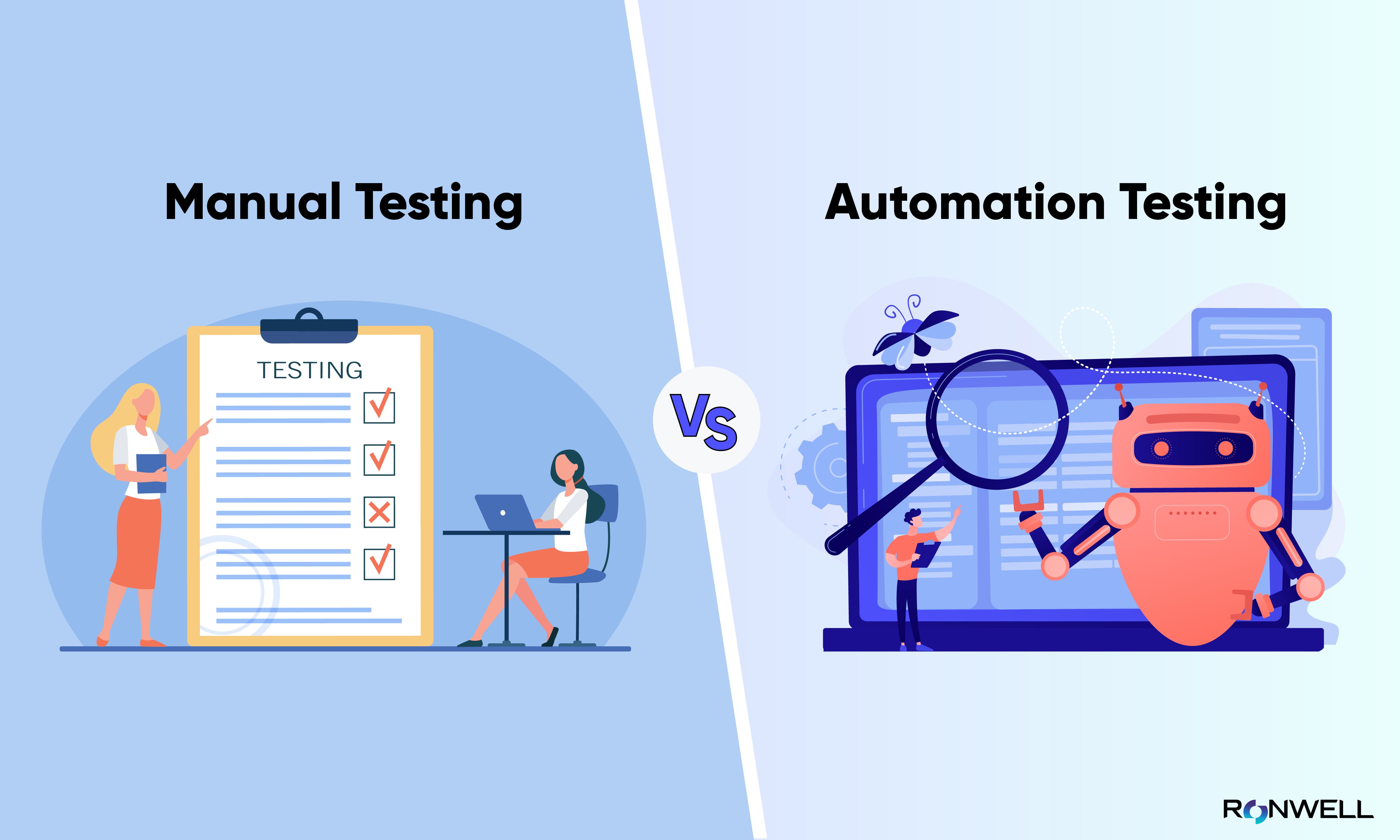The Ultimate Overview to Implementing Automation Testing Efficiently
The Ultimate Overview to Implementing Automation Testing Efficiently
Blog Article
From Handbook to Automated Screening: A Comprehensive Guide to Transitioning Smoothly and Efficiently
In the realm of software screening, the shift from guidebook to automated procedures has actually ended up being a progressively vital transition for organizations seeking to boost efficiency and accuracy in their screening methods. The journey from handbook to automated testing is not without its challenges, but when come close to strategically and with a clear strategy in mind, the benefits can be substantial.
Benefits of Automated Evaluating
Automated testing offers various advantages, improving performance and accuracy in software program development procedures. One main benefit is the significant decrease in testing time. Automated tests can be run simultaneously on numerous devices and running systems, dramatically speeding up the screening stage compared to manual screening. This boosted performance enables for faster feedback on the top quality of the software application, allowing developers to identify and address problems promptly.
Moreover, automated testing ensures a higher level of accuracy in detecting flaws. Considering that automated examinations comply with predefined manuscripts, human error is reduced, leading to more reliable examination outcomes. Uniformity in screening is also enhanced, as automated tests implement the exact same actions exactly each time they are run. This consistency is vital in making sure that all capabilities of the software program are extensively tested, decreasing the possibility of unseen bugs slipping with to manufacturing.
Selecting the Right Tools

To start with, assess your demands and objectives. Comprehend the scope of your project, the technologies included, and the capability of your team. This analysis will certainly aid you determine the functions and abilities you need in your screening devices.
Second of all, consider the compatibility of the devices with your existing systems and procedures. Seamless integration with your present software growth lifecycle is vital to make certain a smooth transition to automation.
Additionally, examine the scalability and adaptability of the devices. As your testing needs progress, the devices ought to have the ability to adapt and suit modifications efficiently.
Lastly, consider the assistance and area around the tools. Robust assistance and an active individual neighborhood can offer useful resources and aid when executing automated screening. By meticulously considering these aspects, you can pick the right tools that align with your needs and set the stage for a successful transition to automated screening.
Composing Efficient Examination Manuscripts

When crafting test manuscripts, it is necessary to take into consideration the certain demands of the software being tested and make sure that the manuscripts deal with all crucial performances. Clear and detailed naming conventions for examination manuscripts and examination situations can enhance readability and maintainability. Additionally, including mistake handling systems within the test manuscripts can assist in recognizing and attending to concerns immediately.
Furthermore, organizing test scripts into modular components can enhance reusability and scalability, minimizing redundancy and enhancing effectiveness in examination manuscript maintenance. Regular evaluations and updates to evaluate manuscripts are vital to equal progressing software requirements and functionalities. By following these principles, see this website testers can produce effective and robust examination manuscripts that add substantially to the success of automated testing processes.
Integrating Automation Into Workflows
Efficient integration of automation devices right into existing workflows improves processes and enhances performance within software growth cycles. When incorporating automation into operations, it is crucial to identify recurring tasks that can be automated to save time and lower human mistake. By seamlessly integrating automated testing devices like Selenium or Appium right into the software program growth lifecycle, teams can accomplish faster responses on code adjustments, resulting in quicker pest discovery and resolution. This combination permits continuous screening throughout the growth procedure, making certain that any kind of concerns are recognized beforehand, resulting in higher software top quality. Furthermore, automation can be utilized to set off tests immediately after each code devote, offering prompt validation and maximizing testers to concentrate on even more facility circumstances. Proper integration of automation tools requires cooperation between growth, testing, and procedures teams to develop a unified process that optimizes efficiency and efficiency in providing high-quality software application products.
Making Sure a Smooth Shift
Efficiently transitioning to automated screening entails careful preparation and careful implementation to Discover More maximize and decrease interruptions performance in the software growth procedure - automation testing. To guarantee a smooth shift, it is vital to begin by carrying out a complete analysis of the existing screening processes and identifying areas where automation can bring the most substantial advantages. Engaging with all stakeholders early while doing so, including developers, testers, and task managers, is important for amassing assistance and buy-in for the automation effort
Interaction is vital throughout this transition stage. Clear interaction of the goals, benefits, and expectations of automated screening aids to take care of any type of resistance or concerns that might arise. Furthermore, providing ample training and sources for group members to upskill in automation devices and techniques is essential for making certain a successful change.

Final Thought
Finally, transitioning from guidebook to automated testing supplies many benefits, consisting of raised performance and integrity. By picking the appropriate tools, creating efficient examination manuscripts, and integrating automation effortlessly right into process, organizations can guarantee a smooth and effective shift. It is necessary to Check This Out embrace automation as a beneficial possession in software screening processes to enhance total top quality and efficiency.
In the realm of software testing, the change from manual to automated processes has actually come to be an increasingly essential change for companies seeking to improve performance and accuracy in their testing practices. Automated examinations can be run all at once on multiple tools and operating systems, significantly speeding up the screening phase compared to hands-on testing. Uniformity in testing is additionally improved, as automated examinations execute the exact same actions specifically each time they are run.To make sure the successful application of selected screening devices, the development of efficient examination manuscripts plays an important role in confirming the functionality and performance of automated processes - automation testing. By complying with these concepts, testers can create robust and efficient examination manuscripts that add dramatically to the success of automated screening processes
Report this page